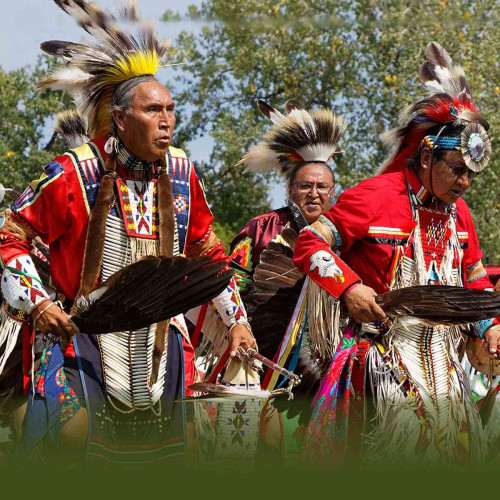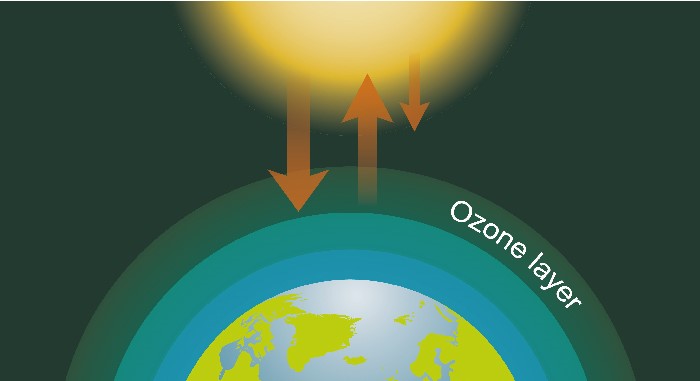The bones came from a roughly 12 to 18 month-old boy. He died about 12,600 years ago in what is now Montana. Construction workers uncovered the grave in 1968. It remains the only known burial site of a person from the Clovis culture.
Clovis is the name of prehistoric people. They lived in what is now the United States and northern Mexico between about 13,000 and 12,600 years ago. They made a type of stone spear point that differs from stone tools found elsewhere in the world at the time.
The young boy had been covered in red ochre. It’s a natural pigment that had often been used in burial rituals at the time. More than 100 tools had been placed atop his body when it was buried. Those tools also had been dipped in red ochre.
Some were the stone spear points or tools used to make the spear points.. People had fashioned rods from elk antlers, a rare material in Montana at the time. The bone tools were 13,000 years old — hundreds of years older than the child’s parents. The bone rods had been deliberately broken before being placed with the boy’s body. That suggests these ancient tools could have been family “heirlooms,” the scientists say.
All of those details are fairly old. Decades old, at least.
What’s new are analyses of the Clovis child’s DNA. Just reported in the Feb. 13 Nature, they indicate that the Clovis people were ancestors of all present-day Native Americans. And like today’s Native Americans, the Clovis baby — known as Anzick-1 — can trace part of his heritage to a child known as the Mal’ta boy. He lived in Siberia 24,000 years ago. That link now suggests that all Native American populations share a common Asian heritage.
From Asian — not European — roots
“This clearly shows that the homeland of the first Americans was Asia,” says study coauthor Michael Waters. He’s a geologist and archaeologist at Texas University in College Station.
The study may put to rest an oft-reported idea that ancient Europeans crossed the Atlantic and established the Clovis culture. That idea has been known as the Solutrean hypothesis. The new analysis is “the last spade full of earth on the grave of the Solutrean hypothesis,” says Jennifer Raff. An anthropological geneticist, she works at the University of Texas at Austin. She had no role in the current analysis.
The study also may settle speculation about the Clovis people’s relationship to modern Native Americans. Clovis culture was widespread for 400 years after the last Ice Age. Other styles of tool making eventually replaced the distinctive stone spear points made by Clovis people. That was among clues indicating that other American settlers might have replaced the Clovis people.
“Their technology and tools vanished, but now we understand that their genetic legacy lives on,” says Sarah Anzick, a coauthor of the new study.
Anzick was 2 years old when the baby’s grave was found on her family’s land. Since then, she and her family have been stewards of the bones, keeping them respectfully preserved and locked away.
Respecting the bones
In time, Anzick became a molecular biologist, at one point working on the Human Genome Project (completed in April 2003, it gave scientists an ability to read a person’s full genetic blueprints). Based on that experience, Anzick made it a personal goal to decipher the Clovis baby’s DNA.
So she traveled with the child’s bones to the lab of Eske Willerslev. He’s an evolutionary geneticist at the University of Copenhagen, in Denmark. There, she helped extract DNA from the skeleton and performed some of the initial tests. Willerslev and his colleagues completed the rest of the toddler’s genetic blueprints.
Their examination shows that about one-third of the Clovis baby’s genome traces back to the ancient Siberian people, says Willerslev. The remainder, he says, comes from an ancestral East Asian population. The new data suggest East Asians and Siberians interbred before the Clovis era. Their descendants would have become the founding population for all later Native Americans.
About four out of five Native Americans, mainly those in Central and South America, probably descend directly from the Anzick baby’s people, Willerslev says. Other native peoples, such as those in Canada, are closely related to the Clovis child. They, however, come from a different branch of the family.
Anzick and members of several Native American tribes are preparing to rebury the baby’s remains where his parents had left him more than 12 millennia ago. It’s at the base of a sandstone cliff. The site overlooks a creek with views of three mountain ranges.

DNA from an ancient baby’s skeleton shows that all Native Americans descend from a single gene pool. And their ancestral roots are in Asia, a new study finds.




